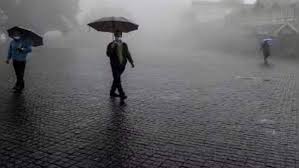
Tamil Nadu’s much-awaited Northeast Monsoon—the lifeline of the state’s water resources—has delivered below-average rainfall this year. Meteorologists and farmers alike are expressing growing concern over the shortfall and its possible impact on agriculture, water storage, and the state’s ecosystem.
1. The Lifeline Monsoon: Why It Matters
The Northeast Monsoon, which typically spans from October to December, is tamil Nadu’s primary rainy season, accounting for nearly 48% of its annual rainfall. Unlike most of india that depends on the southwest monsoon, tamil Nadu’s agriculture and drinking water largely rely on these crucial three months of rain.
2. This Year’s Numbers: A Noticeable Dip
According to data from the India Meteorological Department (IMD), tamil Nadu has received below-normal rainfall this season—about 20–25% less than the long-period average.
Several districts including Chennai, Chengalpattu, Kancheepuram, Cuddalore, and Villupuram have recorded a significant deficit, while isolated regions in the Western Ghats saw near-normal showers.
3. Why the Shortfall? Experts Explain
Meteorologists attribute this rainfall shortage to a combination of atmospheric and oceanic factors:
· Weak easterly winds over the Bay of Bengal
· Reduced low-pressure systems forming in the sea
· The influence of El Niño, which tends to suppress monsoon activity in South India
According to IMD officials, the El Niño phenomenon—a warming of Pacific Ocean waters—has disrupted rainfall patterns across Asia, resulting in fewer rain-bearing systems reaching tamil Nadu.
4. Impact on Agriculture and Rural Economy
Farmers in the delta and dryland regions are already feeling the strain. The below-normal rains have:
· Delayed paddy transplantation in the Cauvery delta
· Affected groundwater recharge and small irrigation tanks
· Reduced soil moisture needed for rabi crops like pulses and millets
In districts like Thanjavur, Tiruvarur, and Nagapattinam, farmers worry about yield losses if rains don’t improve in the coming weeks.
5. Urban Worries: Water Supply and Heat Concerns
For cities like Chennai, the northeast monsoon is critical for replenishing reservoirs such as Poondi, Chembarambakkam, and red Hills. With limited inflow this season, officials are already mapping out contingency plans for summer 2026.
Experts warn that water scarcity and rising temperatures could become key urban challenges if the deficit persists.
6. Climate Change in the Background
Climatologists suggest that climate variability is altering tamil Nadu’s traditional rainfall pattern. Over the last decade, the state has witnessed:
· Erratic rainfall distribution — long dry spells followed by short, intense downpours
· Increased temperature fluctuations
· More frequent cyclonic disturbances that are unpredictable in timing and intensity
These shifts point toward climate change-driven weather instability, affecting both rural and urban ecosystems.
7. What’s Next: IMD Forecast and Caution Ahead
The IMD forecasts scattered showers in the coming weeks due to a possible low-pressure area forming over the Bay of Bengal. However, meteorologists caution that these isolated rains may not make up for the seasonal deficit.
Authorities are advising judicious water management, rainwater harvesting, and continued drought preparedness for vulnerable districts.
8. The silver Lining: Learning to Adapt
Despite the challenges, tamil Nadu has a strong record of adaptation and resilience. From micro-irrigation systems to integrated watershed projects, several initiatives are helping communities better manage fluctuating rainfall.
As experts emphasize, sustainable water use, climate-smart farming, and timely policy interventions are key to navigating this new normal.
In Summary
The below-normal Northeast Monsoon is more than just a seasonal anomaly—it’s a reminder of how fragile tamil Nadu’s climate balance has become. While nature’s patterns shift, preparedness, conservation, and innovation will define how the state moves forward in an era of unpredictable weather.
Disclaimer:
The views and opinions expressed in this article are those of the author and do not necessarily reflect the official policy or position of any agency, organization, employer, or company. All information provided is for general informational purposes only. While every effort has been made to ensure accuracy, we make no representations or warranties of any kind, express or implied, about the completeness, reliability, or suitability of the information contained herein. Readers are advised to verify facts and seek professional advice where necessary. Any reliance placed on such information is strictly at the reader’s own risk.




 click and follow Indiaherald WhatsApp channel
click and follow Indiaherald WhatsApp channel